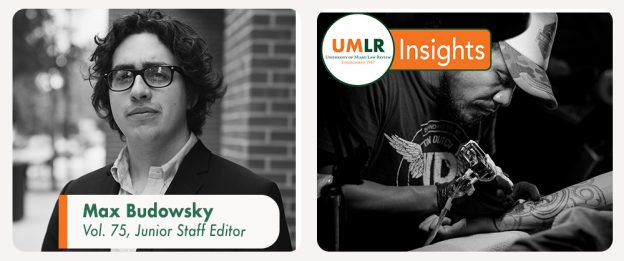MAX BUDOWSKY—In March, a federal district court in New York issued a decision that promises to shake up copyright law in a big way. Solid Oak Sketches, LLC v. 2k Games, Inc., centered around five unique tattoos that appear on the skin of three basketball players, Kenyon Martin, Eric Bledsoe, and LeBron James. The court in Solid Oak Sketches held that the publisher of NBA 2k, a popular basketball videogame, did not infringe on Solid Oak Sketches’, a tattoo licensing company, tattoo copyrights when the publisher depicted those tattoos on basketball players in their game. In ruling for the defendant, the court found that the use of the tattoos did not violate Solid Oak’s copyright for three reasons: (1) the use was de minimis; (2) the players had an implied license to use and display the tattoos as part of their likeness; and (3) the use of the tattoos in the videogame constituted fair use. While all three justifications are important and will have a substantial impact on copyright law and videogame development moving forward, this blog addresses the second justification, the implied license, as it is likely to have the most far reaching impact and creates a number of problems that a court will likely have to answer soon.
The key to the dispute over whether an implied license to use the tattoos existed centered on the ability of the athletes to “commercially exploit the underlying artwork” as part of their likeness. The court had no difficulty concluding that “tattooists necessarily grant[sic] the Players nonexclusive licenses to use the Tattoos as part of their likenesses. . . .” Solid Oak attempted to combat this by arguing that the tattooists’ subjective expectations about whether a tattoo would become a part of their client’s likeness should “play[ ] no role in copyright law.” The court, however, was not convinced. It is likely that the court’s decision was partially guided by a quasi-moral conundrum: can copyright law impede a person’s free use of their own body? It is not difficult to see why the court would worry that finding for Solid Oak would lead to a nightmare scenario where people with tattoos lose total autonomy over their bodies. The court instead drew a line in the sand by refusing to extend absolute copyright protection to works that are fixed on another human being’s body.
Unfortunately, the above concerns are not explicitly addressed by the court. Instead, the court bases its decision on a series of unfortunate admissions by the tattooists who stated that: (1) they knew they were tattooing professional basketball players; (2) who were likely to appear in various media; and (3) that the tattoos would become part of the players’ likenesses. This allowed the court to skip the more existential issues lying beneath the surface of the case and instead limit the ruling to the specific facts at hand. The potentially game-changing impact of this decision, however, does not lie in the justification but rather in the holding. By roping in an athlete’s publicity rights (i.e. their ability to license their likeness) the court opens the door for an “implied license defense” in copyright cases involving publicity issues.
This decision is still very fresh, meaning there has not been enough time to see how other courts (perhaps even the Second Circuit on appeal) will validate and apply the implied license defense. There are a number of lingering questions that remain unanswered in the wake of this decision. Of them, the most pressing concern is how this decision will (or will not) apply to other media. The court leaves the door wide open for the creation of a “likeness license” in all media but does not define the boundaries of the license. In fact, the court explicitly avoids ruling on the “precise circumstances under which an implied [likeness] license will be found.” A major concern for film and television will be whether one’s “persona” exists even when they are playing a fictional character.
The court also did not address how the fame or status of the “canvas” (the person wearing the tattoo) affects the implied license defense. The court focused heavily on the subjective expectation of the tattoo artists about the tattoo becoming a part of the canvas’ likeness. Specifically, on the artists knowledge that the players are very visible public figures likely to appear “in public, on television, in commercials, or in other forms of media,” and that the tattoo artist knew the ink would become part of their likeness. This begs the question, what if the artist was unaware of the status of the canvas, or what if the canvas is not a public figure? If an implied license is dependent on subjective expectations, an easy response is that because the canvas is not famous, or because the artist had no idea the canvas was a public figure, they had no expectation that the tattoo would become a part of their likeness. This could theoretically create a situation where some of a person’s tattoos have this implied license while others do not; the only difference being that some are inked after the canvas becomes famous. It also creates a two-tiered system where famous people are awarded more control to publicly exploit their bodies with the only determinative difference being their fame.
The unfortunate reality of the courts is that they cannot realistically answer every hypothetical spin on their decision. However, with the potentially deep and far reaching impact of Solid Oak Sketches v. 2k Games, it will be important to keep an eye on how future courts react to and interpret this precedent.






